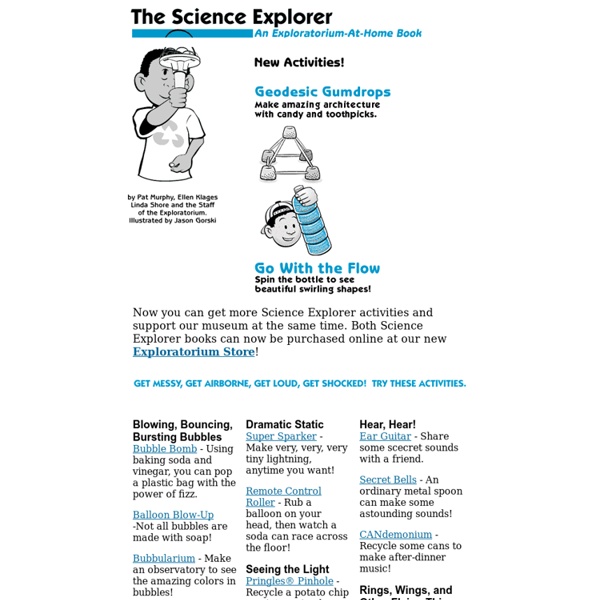Science Explorer: At Home Science Projects

Science experiments at home
The tank Stored energy, friction and the reduction of it with the candle, and also if the cotton reel needs to be roughened up to make it grip the "ground". Back to the enquiry | Back to the index Why the comeback tin comes back The rolling tin stores energy in the elastic, because the weight always hangs down as the tin rolls in one direction. The inertia bricks A thick pile of newspapers in a box on the floor will make this a whole lot quieter and safer!! Resonant pendula The principle of resonance causes the energy to be transferred from one pendulum to the other, and then back again, provided they are the same length. Coupled pendula Because the two pendula have the same length, this means they have the same frequency. Torsion pendulum The torsion pendulum has a constant period, regardless of the displacement: try varying the weights, or their placement, and see what the period (one full cycle from stop, through turn through stop through turn back through to stop again) is. Probe
How to Get Started in Amateur Astronomy
Astronomy is the study of the stars, planets, and other celestial objects that populate the sky. It is an endlessly fascinating field, the oldest of the natural sciences, and one of the few areas of science that amateurs can directly assist the professionals. It is open and accessible for any level of interest and involvement, from folks who just want to learn how to recognize the constellations all the way to near pros with telescopes worth more than their houses. My goal in this instructable is to provide a set of resources for anyone interested in getting started with this hobby, in the form of a step by step guide for someone who just isn't sure where to begin. If you can think of anything I should add to this guide, make sure to leave a comment below--if I use your suggestion, I'll send you a DIY patch. Finally, please lend me your vote in the Space Contest.
Related:
Related:



